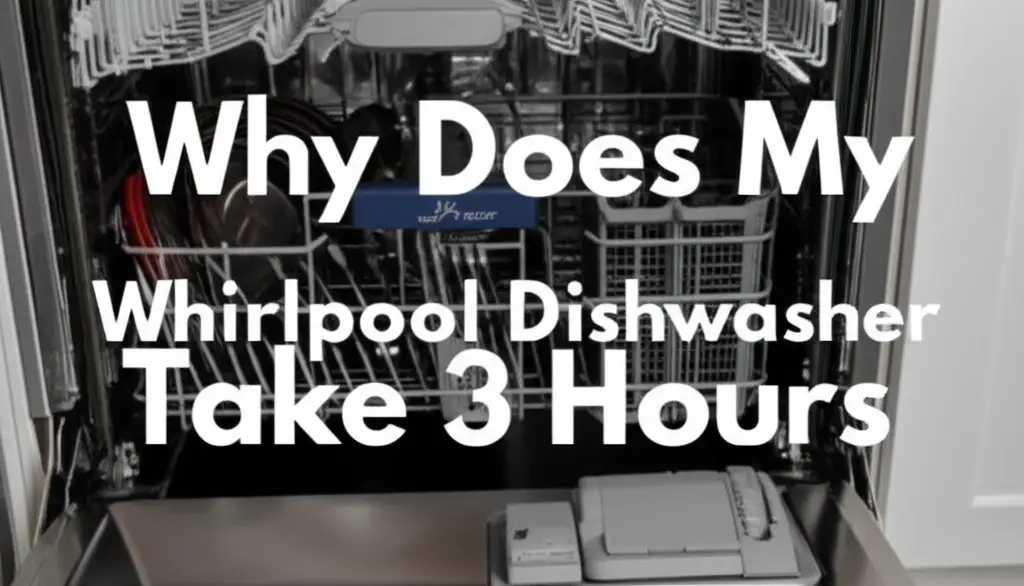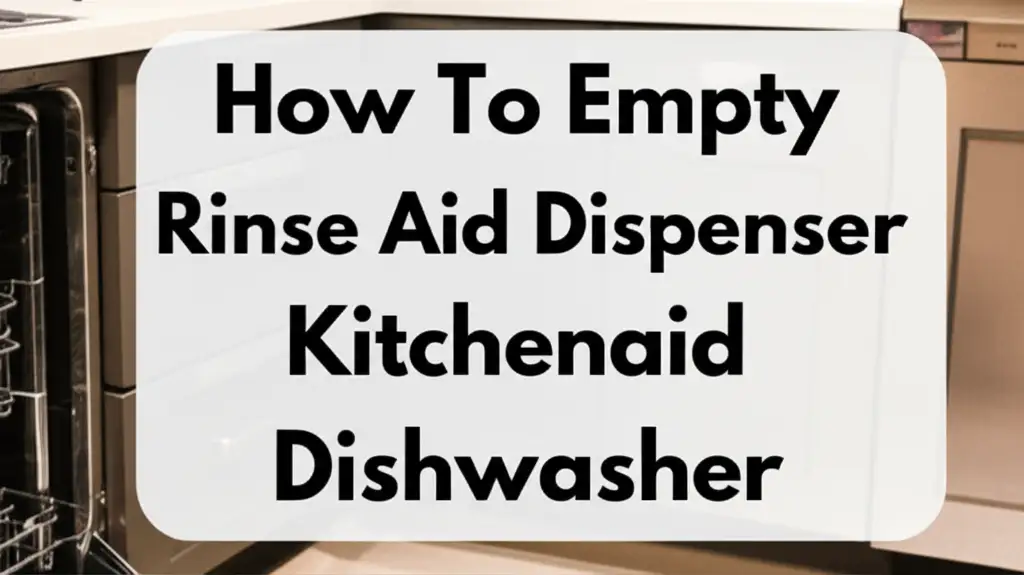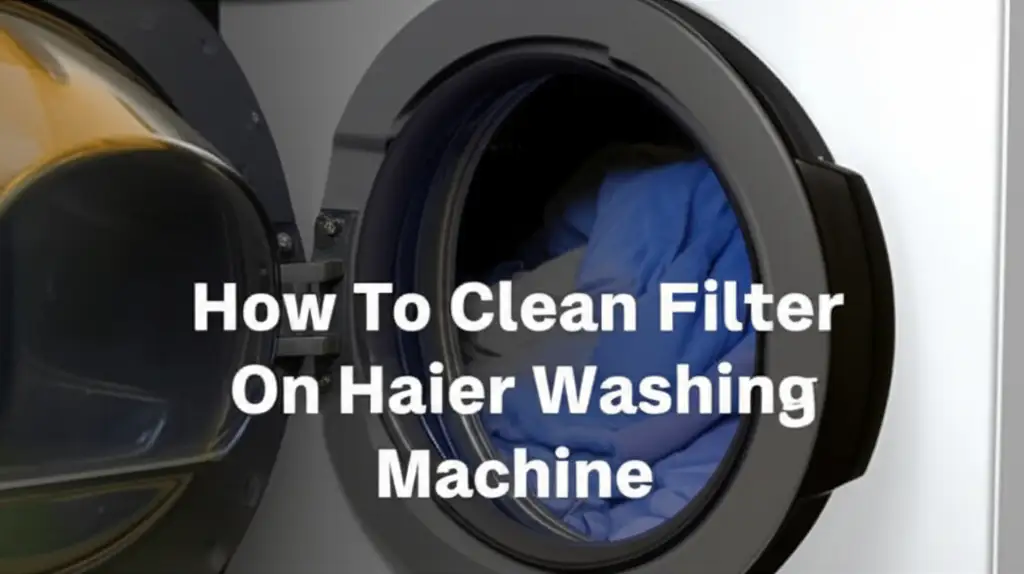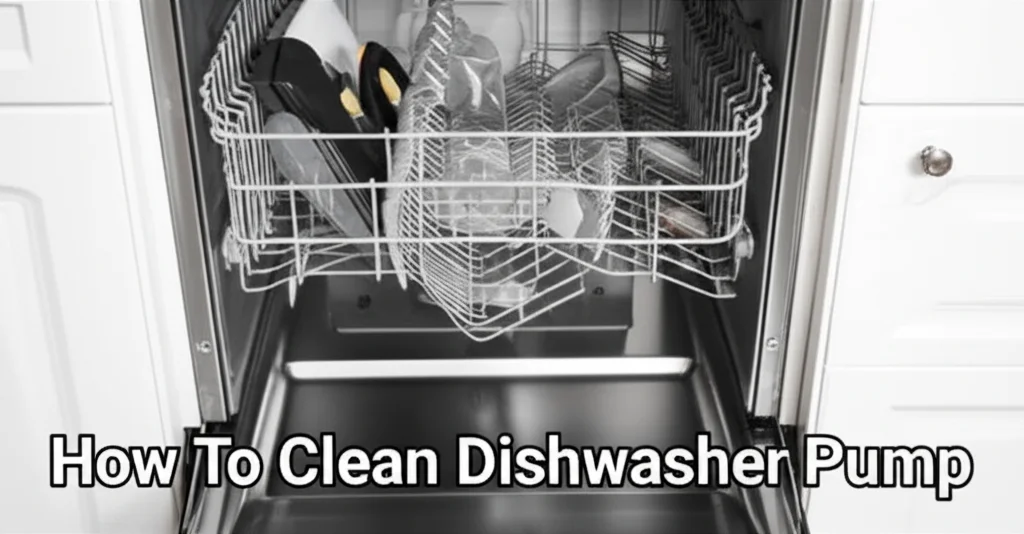· Todd Martin · Appliance Maintenance · 15 min read
Why Does My Whirlpool Dishwasher Take 3 Hours

Why Your Whirlpool Dishwasher Takes 3 Hours: A Deep Dive
Many homeowners experience a common puzzle: “Why does my Whirlpool dishwasher take 3 hours?” This lengthy cycle can cause frustration, making you wonder if something is wrong. You bought your Whirlpool for its efficiency and reliability. Now, it seems to run forever.
Long wash times are often normal for modern dishwashers, including Whirlpool models. These appliances use advanced technology to save energy and water. They adapt cycle lengths based on many factors. However, sometimes a long cycle signals an issue. This article will explain why your Whirlpool dishwasher takes 3 hours. We will cover normal operation and common problems. You will learn simple troubleshooting steps.
Takeaway
Your Whirlpool dishwasher often takes 3 hours due to:
- Normal operation: Modern dishwashers run longer for energy efficiency and better cleaning.
- Sensor wash technology: The dishwasher detects soil levels and adjusts the cycle.
- Low water temperature: The dishwasher heats incoming water, which adds time.
- Clogged components: Filters, spray arms, or drain pumps can slow down cycles.
- Component malfunctions: A faulty heating element or control board may cause delays.
- User habits: Overloading or using too little detergent affects cleaning time.
A Whirlpool dishwasher can take 3 hours because of modern efficiency features, varying soil levels, or cold incoming water that requires heating. Sometimes, clogs in filters, spray arms, or the drain pump extend wash times. Faulty components like the heating element or control board also cause longer cycles.
Understanding Modern Whirlpool Dishwasher Cycles
Many people ask, “Why does my Whirlpool dishwasher take 3 hours?” This question often comes from comparing new dishwashers to older models. Older dishwashers ran shorter cycles. They used more hot water and energy. Modern Whirlpool dishwashers operate differently. They focus on energy and water efficiency.
Newer dishwashers use less water. They also use lower wash temperatures. This approach requires more time to achieve clean dishes. The detergent needs time to work effectively. Dishes need adequate soak time. This method ensures thorough cleaning with fewer resources. A 3-hour cycle is often a standard duration for eco-friendly or heavy-duty settings. You might see comparable cycle times on other brands, too. Why does my GE dishwasher take 4 hours or Why does my LG dishwasher run for 3 hours are common queries for similar reasons.
Most Whirlpool dishwashers feature a “Sensor Wash” or “Auto” cycle. This cycle automatically adjusts time and water usage. It depends on how dirty your dishes are. Sensors detect the soil level in the water. If dishes are heavily soiled, the dishwasher extends the wash time. It adds more rinses or a stronger wash phase. This ensures your dishes come out spotless. This intelligent design is a major reason for variable, often longer, cycle times.
Your owner’s manual provides detailed information about each cycle. Reviewing these options helps understand normal run times. Different cycles like “Heavy,” “Pots & Pans,” or “Sanitize” naturally take longer. They use more water, heat, or extended wash periods. The “Normal” or “Sensor” cycle will also adjust based on load conditions. If you regularly run a heavy cycle, a 3-hour wash time is expected.
Water Temperature and Pressure: Cycle Extenders
The temperature of incoming water significantly impacts a Whirlpool dishwasher’s cycle length. Whirlpool dishwashers usually heat water to the optimal temperature for cleaning and sanitizing. If your home’s hot water supply is not hot enough, the dishwasher must spend extra time heating the water. This adds many minutes, possibly even an hour, to the total cycle. It is more efficient to start with hot water from your tap.
To help your dishwasher, run the kitchen sink hot water before starting a cycle. This brings hot water closer to the dishwasher. It reduces the time the dishwasher needs to heat water. Many Whirlpool models have an internal heating element. This element boosts water temperature. If this element is faulty, or if the thermostat does not read temperatures correctly, the dishwasher may try to heat water indefinitely. This can cause very long cycles or incomplete washes. A non-drying issue often links to the heating element. You can learn more about related issues like Why does my Whirlpool dishwasher not dry my dishes.
Low water pressure also contributes to longer wash cycles. A dishwasher needs sufficient water pressure to fill properly and spray effectively. If water pressure is low, the dishwasher takes longer to fill. It may also struggle to get enough water to the spray arms. This affects cleaning performance and extends the cycle. You might notice dishes are not fully clean.
Check your home’s water pressure if you suspect this is the problem. You can often see an immediate difference when water pressure improves. Low pressure can be a household plumbing issue, not just a dishwasher problem. A service check might be needed for persistent low water pressure. Ensure the water inlet valve is fully open. A partially closed valve restricts water flow.
Soil Levels and Smart Sensors in Whirlpool Dishwashers
One primary reason your Whirlpool dishwasher takes 3 hours is its smart sensor technology. Modern dishwashers, including Whirlpool models, use sensors to detect how dirty your dishes are. This is part of the “Sensor Wash” or “Auto” cycle. The sensor analyzes the turbidity of the water. Turbidity measures how cloudy the water is due to food particles. If the water is very cloudy, the dishwasher recognizes a heavily soiled load.
When sensors detect a high soil level, the dishwasher extends the cycle automatically. It increases wash time. It might add extra rinses. It could also use more intense spray patterns. This ensures that even the dirtiest dishes come out clean. This process is normal and ensures optimal cleaning performance. If you put heavily crusted pots or pans in, expect a longer wash. Your dishwasher is simply doing its job thoroughly. This is often why you might notice some white residue if the soil levels are off or detergent is incorrect. Why does my Whirlpool dishwasher leave white residue can sometimes relate to these sensor readings and detergent interaction.
Conversely, if dishes are pre-rinsed too much, the sensors might detect very little soil. This can sometimes trick the dishwasher. It might then select a lighter, shorter cycle. This is usually fine, but if you have stubborn food bits, they might not get clean. It is best to scrape off large food particles but avoid excessive pre-rinsing. Let the dishwasher’s sensors do their work.
Understanding this sensor function helps explain the varying cycle times. It is not a malfunction. It is the dishwasher adapting to your specific load. This feature helps save water and energy on lighter loads. It provides powerful cleaning for dirtier ones. So, a long cycle often means you had very dirty dishes. The dishwasher responded by working harder.
Blockages and Clogs: Impact on Whirlpool Wash Times
Clogs and blockages are common culprits when your Whirlpool dishwasher takes 3 hours. Over time, food particles, grease, and mineral deposits build up inside the dishwasher. These blockages can severely impact performance. They force the dishwasher to work harder and longer. This leads to extended wash cycles.
The filter is a primary area for clogs. Whirlpool dishwashers have a filter system at the bottom. This filter catches large food debris. If the filter gets clogged, water cannot drain properly. The dishwasher may run longer as it struggles to circulate clean water. Regularly cleaning the filter is essential maintenance. Most filters simply twist out. You can rinse them under running water.
Spray arms also get clogged. Small food particles can block the tiny holes in the spray arms. This reduces water pressure and spray effectiveness. When spray arms are blocked, dishes do not get a proper wash. The dishwasher might compensate by running longer. You might notice dishes are not clean. Sometimes, the dishwasher does not spray water at all. This requires immediate attention. You can find more information about this at Why is my Whirlpool dishwasher not spraying water.
The drain hose or drain pump can also become blocked. If the dishwasher struggles to drain water, it can prolong the cycle. Water might remain in the tub after a cycle. This is a clear sign of a drainage issue. Blockages in the drain hose prevent dirty water from leaving. The pump might work harder, leading to longer cycles and potential pump failure. This issue is directly related to When dishwasher does not drain. Checking the drain path, including the air gap if you have one, is important. These clogs are preventable with regular cleaning and proper dish loading.
Component Failures Extending Whirlpool Dishwasher Cycles
While often normal, a 3-hour Whirlpool dishwasher cycle can sometimes indicate a component failure. Several parts can malfunction, causing the dishwasher to run excessively long or not complete its cycle. Identifying the specific faulty part requires some troubleshooting.
The heating element is crucial for drying and proper wash temperatures. If the heating element fails, the dishwasher cannot heat the water efficiently. It will spend extra time trying to reach the target temperature. This prolongs the wash cycle. Dishes may also come out wet or not thoroughly cleaned. A common symptom of a bad heating element is wet dishes at the end of the cycle. This directly relates to the issue of Why does my Whirlpool dishwasher not dry my dishes.
The thermostat or thermistor monitors water temperature. If this sensor gives an incorrect reading, the dishwasher might never know the water is hot enough. It will keep heating or running. This causes extended cycles. Similarly, a faulty water inlet valve can cause problems. If the valve does not open fully or is slow, the dishwasher takes too long to fill with water. This can also lead to issues like Why does my Whirlpool dishwasher fill with water but not wash, as the wash cycle cannot start correctly without enough water.
Finally, the control board or timer can fail. The control board is the “brain” of your dishwasher. It manages all functions and cycle timings. A malfunctioning control board might send incorrect signals. It could get stuck in a loop. It might fail to advance to the next cycle stage. This leads to unusually long cycles or the dishwasher getting stuck. Replacing a control board is often a task for a professional technician. However, a simple power cycle (unplugging the dishwasher for a few minutes) can sometimes reset the board and resolve minor glitches.
User Habits and Detergent Impact on Cycle Lengths
Your loading habits and detergent choices greatly influence how long your Whirlpool dishwasher runs. Believe it or not, improper loading can make your dishwasher take 3 hours or more. Overloading the dishwasher packs dishes too tightly. This prevents water and detergent from reaching all surfaces. The spray arms cannot rotate freely. Dishes might block the detergent dispenser. This poor circulation means dishes do not get clean. The dishwasher may try to compensate by extending the wash time.
Underloading can also cause issues, though less commonly with cycle length. However, it is inefficient. For optimal cleaning and cycle efficiency, follow the manufacturer’s loading guidelines. Avoid nesting bowls or cups. Ensure larger items do not block spray arm rotation. Proper loading ensures water and detergent reach every item. This allows the dishwasher to complete its cycle effectively.
The type and amount of detergent matter. Using too little detergent means dishes are not cleaned properly. The dishwasher’s sensors might detect remaining soil. This causes it to extend the cycle for more cleaning. Using too much detergent, especially with soft water, can create too many suds. Excessive suds can interfere with the spray arms and pump. The dishwasher might run extra rinse cycles to clear the suds, adding time. Always use high-quality dishwasher detergent. Use the recommended amount for your water hardness and soil level. If you wonder where to put dishwasher pods Whirlpool, ensure they are placed correctly for proper dissolution.
Rinse aid also plays a role in cycle efficiency, particularly in drying phases. While not directly extending the wash cycle, it impacts the overall perception of completion. If dishes remain wet, you might think the cycle is incomplete. Using rinse aid helps water sheet off dishes, improving drying. This means the heating element works less. Ensure your rinse aid dispenser is full. If you need help with this, refer to guides like How to fill rinse aid on Whirlpool dishwasher and How to use the rinse aid for Whirlpool dishwasher. These small habits collectively ensure your dishwasher runs efficiently.
Troubleshooting Steps and Preventative Maintenance
When your Whirlpool dishwasher takes 3 hours, start with simple troubleshooting steps. These can often identify and fix the issue without professional help. Regular maintenance also prevents many common problems. A clean and well-maintained dishwasher runs more efficiently.
Troubleshooting Steps:
- Check the Cycle Selection: Ensure you are not selecting a heavy-duty, sanitize, or eco-cycle. These cycles are designed to be longer. Switch to a “Normal” or “Light” cycle to see if the time decreases.
- Verify Water Temperature: Run your kitchen faucet hot water before starting the dishwasher. This ensures the dishwasher fills with already hot water. This reduces the time the internal heater needs.
- Inspect and Clean Filters: The filter at the bottom of the dishwasher catches food debris. A clogged filter restricts water flow and drainage. Remove and rinse the filter under running water. Do this regularly, perhaps monthly.
- Clear Spray Arm Nozzles: Food particles can block the small holes in the spray arms. Spin the spray arms manually to check for blockages. Remove them and clean out any debris with a toothpick or small brush. Ensure they spin freely after cleaning. If you see water pooling at the bottom, it might be a drain issue. Learn more at Why does my Whirlpool dishwasher have water in the bottom.
- Check Drain Hose and Air Gap: Ensure the drain hose is not kinked or clogged. For dishwashers with an air gap on the sink, check it for blockages. These issues prevent proper drainage and extend cycles.
- Assess Detergent and Rinse Aid Levels: Use the correct amount of high-quality detergent. Ensure the rinse aid dispenser is full. Incorrect amounts can affect cleaning efficiency and prolong cycles.
- Reset the Dishwasher: Sometimes, a simple power cycle fixes electronic glitches. Turn off the circuit breaker for the dishwasher for 5 minutes. Then turn it back on. This can reset the control board.
Preventative Maintenance:
- Regular Cleaning: Run a dishwasher cleaning cycle using a dishwasher cleaner or a cup of white vinegar. Place the vinegar in an open cup on the top rack. Run an empty hot cycle. This helps remove grease and mineral buildup.
- Scrape Dishes: Scrape large food particles off dishes before loading. Avoid pre-rinsing too much, but remove big chunks. This prevents filter and spray arm clogs.
- Check Water Hardness: Hard water leaves mineral deposits. These can build up in the dishwasher. Use a water softener if your home has very hard water. This helps prevent scale buildup.
- Inspect Door Gasket: Check the door gasket for cracks or debris. A damaged gasket can cause leaks or reduce sealing. This may impact efficiency.
Following these steps ensures your Whirlpool dishwasher remains in good working order. It helps prevent unnecessary long cycles.
FAQ Section
Is a 3-hour dishwasher cycle normal for a Whirlpool?
Yes, a 3-hour cycle can be normal for modern Whirlpool dishwashers. Many models use sensor technology to detect soil levels. They adjust the wash time based on how dirty the dishes are. Eco-friendly settings and heavy-duty cycles are also designed to run for longer periods. This is for energy efficiency and thorough cleaning.
How can I make my Whirlpool dishwasher run faster?
To make your Whirlpool dishwasher run faster, select a shorter cycle like “Quick Wash” or “Express Wash.” Ensure your hot water heater is set high enough, and run the kitchen faucet hot water before starting the dishwasher. Also, scrape excess food off dishes to reduce the workload for the sensor.
What is the most efficient cycle on a Whirlpool dishwasher?
The “Sensor Wash” or “Auto” cycle is often the most efficient on a Whirlpool dishwasher. It adjusts water usage, temperature, and cycle length based on the load’s soil level. This saves water and energy while still providing excellent cleaning. For daily use, this cycle balances performance and efficiency.
Why does my dishwasher run for so long but dishes are not clean?
If your dishwasher runs long but dishes are not clean, check for clogged filters or spray arms. Low water pressure or a faulty heating element can also cause this. Ensure you use enough high-quality detergent. Incorrect loading can also prevent proper cleaning, leading to extended, ineffective cycles.
Should I pre-rinse dishes for a Whirlpool dishwasher?
It is generally not necessary to pre-rinse dishes for a Whirlpool dishwasher. Modern dishwashers are designed to handle food particles. Scrape off large food scraps before loading. Excessive pre-rinsing can confuse the dishwasher’s soil sensors. This might cause it to select a less intense, shorter cycle, potentially leading to less thorough cleaning for truly dirty items.
How often should I clean my Whirlpool dishwasher filter?
You should clean your Whirlpool dishwasher filter regularly, ideally once a month. If you wash heavily soiled dishes often, clean it more frequently. A clean filter ensures proper drainage and water circulation. This prevents clogs and keeps your dishwasher running efficiently. Refer to your owner’s manual for specific filter cleaning instructions.
Conclusion
Understanding why your Whirlpool dishwasher takes 3 hours helps ease concerns. Many factors contribute to cycle length. These include modern energy efficiency standards and the smart sensor technology of your appliance. A long cycle often means your dishwasher is working effectively to deliver clean dishes. It uses less water and energy.
However, sometimes a lengthy cycle signals an issue. Clogged filters, spray arms, or drain hoses can hinder performance. A faulty heating element or control board might also cause delays. By performing simple troubleshooting steps, you can identify and resolve many common problems. Regular maintenance, such as cleaning the filter and using proper detergents, helps keep your Whirlpool dishwasher running efficiently.
We encourage you to refer to your Whirlpool dishwasher’s owner’s manual for specific model information. If problems persist after basic troubleshooting, consider contacting a certified appliance technician. They can diagnose complex issues and perform necessary repairs. With a little care and understanding, your Whirlpool dishwasher will continue to serve your home reliably.





